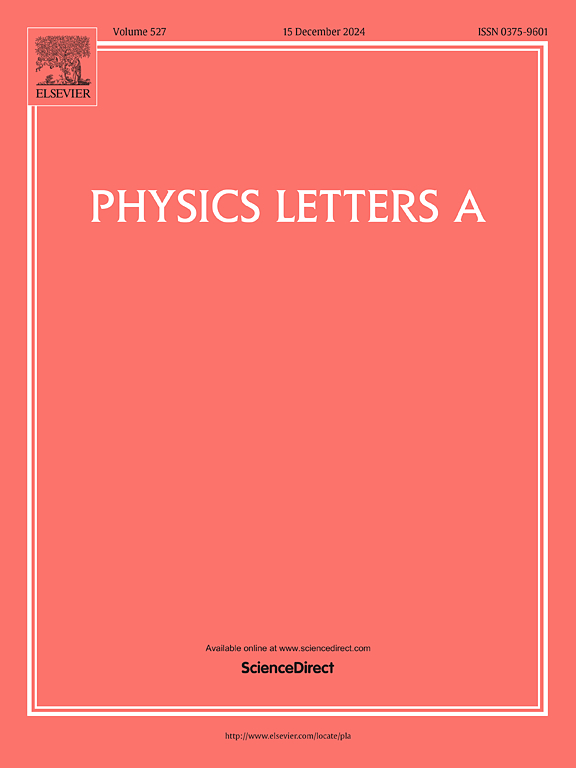基于Johnson图的多目标量子行走搜索
IF 2.6
3区 物理与天体物理
Q2 PHYSICS, MULTIDISCIPLINARY
引用次数: 0
摘要
Johnson图J(n,k)上的离散时间量子行走是执行高成功率目标顶点搜索的有用工具。这个图由n个不同的元素定义,顶点是所有(nk) k个元素的子集,如果两个顶点恰好相差一个元素,则它们通过一条边连接。然而,文献中的大多数工作只关注于寻找Johnson图上的单个目标顶点。在本文中,我们利用非均匀量子行走-一种离散时间创造的量子行走形式,在图的每个顶点都有一个加权自环-以及我们最近提出的改进硬币算子Cg,来寻找不同k值的Johnson图J(n,k)上的多个目标顶点。此外,基于数值分析的比较Cg硬币算子在Johnson图上搜索多个目标顶点的性能,将离散时间量子行走搜索算法与其他各种常用的硬币算子进行比较,结果表明,在本文讨论的所有场景中,只有Cg硬币才能以非常高的成功概率搜索多个目标点,优于文献中广泛使用的其他硬币算子。本文章由计算机程序翻译,如有差异,请以英文原文为准。
Multi-target quantum walk search on Johnson graph
The discrete-time quantum walk on the Johnson graph is a useful tool for performing target vertex searches with high success probability. This graph is defined by n distinct elements, with vertices being all the k-element subsets and two vertices are connected by an edge if they differ exactly by one element. However, most works in the literature focus solely on the search for a single target vertex on the Johnson graph. In this article, we utilize lackadaisical quantum walk–a form of discrete-time coined quantum walk with a wighted self-loop at each vertex of the graph–along with our recently proposed modified coin operator, , to find multiple target vertices on the Johnson graph for various values of k. Additionally, a comparison based on the numerical analysis of the performance of the coin operator in searching for multiple target vertices on the Johnson graph, against various other frequently used coin operators by the discrete-time quantum walk search algorithms, shows that only coin can search for multiple target vertices with a very high success probability in all the scenarios discussed in this article, outperforming other widely used coin operators in the literature.
求助全文
通过发布文献求助,成功后即可免费获取论文全文。
去求助
来源期刊

Physics Letters A
物理-物理:综合
CiteScore
5.10
自引率
3.80%
发文量
493
审稿时长
30 days
期刊介绍:
Physics Letters A offers an exciting publication outlet for novel and frontier physics. It encourages the submission of new research on: condensed matter physics, theoretical physics, nonlinear science, statistical physics, mathematical and computational physics, general and cross-disciplinary physics (including foundations), atomic, molecular and cluster physics, plasma and fluid physics, optical physics, biological physics and nanoscience. No articles on High Energy and Nuclear Physics are published in Physics Letters A. The journal''s high standard and wide dissemination ensures a broad readership amongst the physics community. Rapid publication times and flexible length restrictions give Physics Letters A the edge over other journals in the field.
 求助内容:
求助内容: 应助结果提醒方式:
应助结果提醒方式:


